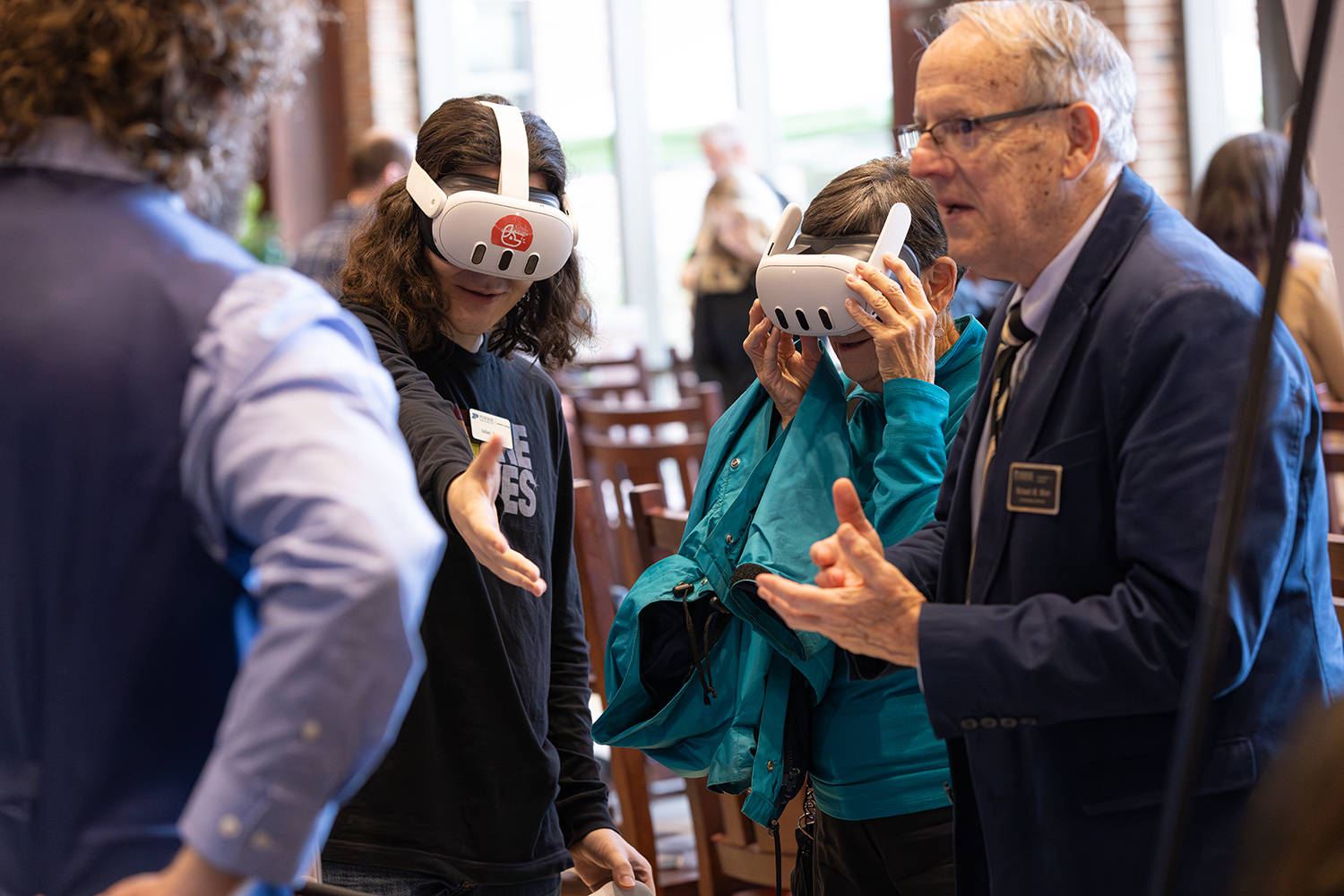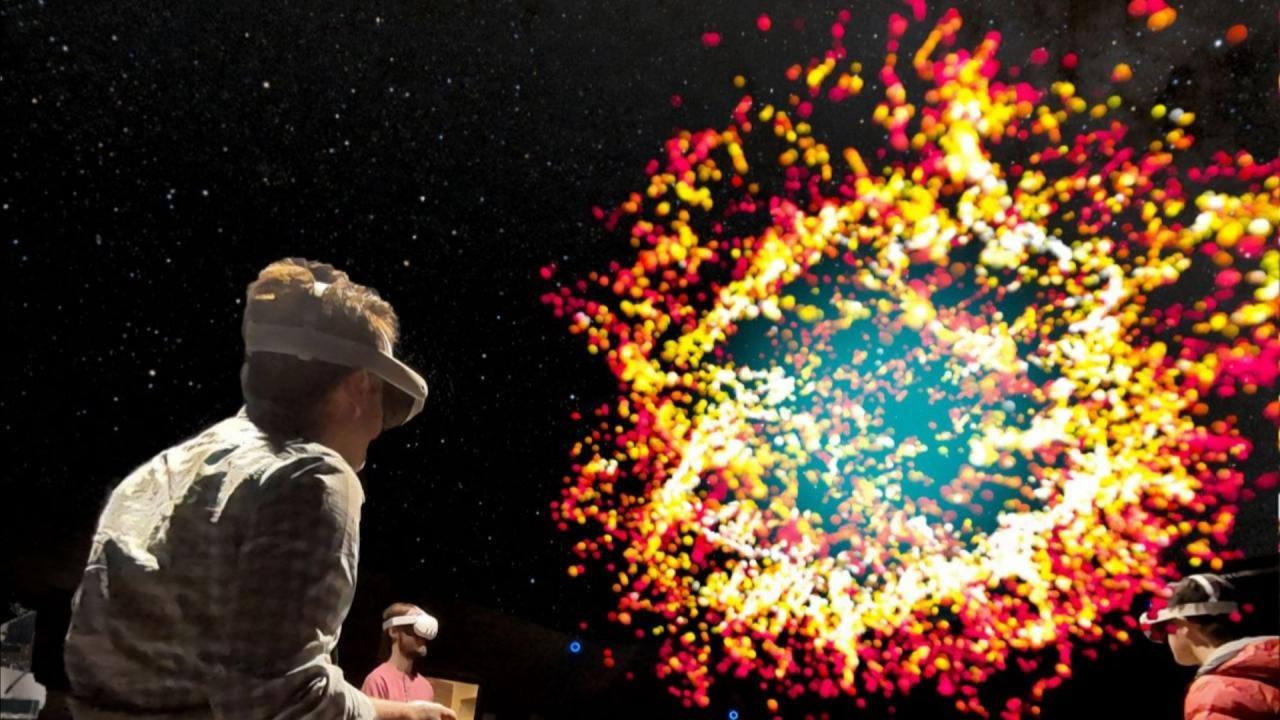 "My personal mission," Julian Triveri explained, "is to make practical technology that works—technology that's easy to use and not predatory in its cost." Triveri, a senior in computer graphics technology, believes his dedication stems from a growing sense of bafflement with the state of modern software and hardware. Modern tech products often prioritize simple tit-for-tat competitiveness and flashy innovations over genuine functionality.
"My personal mission," Julian Triveri explained, "is to make practical technology that works—technology that's easy to use and not predatory in its cost." Triveri, a senior in computer graphics technology, believes his dedication stems from a growing sense of bafflement with the state of modern software and hardware. Modern tech products often prioritize simple tit-for-tat competitiveness and flashy innovations over genuine functionality.
At Purdue University’s Envision Center (part of the Rosen Center for Advanced Computing), Julian collaborates with fellow innovators to apply cutting-edge technologies to problems with the greatest need for novel solutions.
A standout example is his work on virtual and mixed-reality tools for training nuclear pharmacists. “We virtualize training with a VR headset, where students use simulated Geiger counters to detect hidden radioactive sources,” Triveri said.
This hands-on approach not only teaches motor skills critical for safety but also provides companies with auditable training records, ensuring compliance with regulatory standards. “That’s a fantastic fit for VR,” Julian stated; the technology should always serve the problem, not the other way around.
On the topic of VR, Triveri cites the over-application of virtual reality as a prime example of innovation for its own sake. "VR is great for highly interactive, visual, and immersive experiences, but it's not a one-size-fits-all solution. You wouldn’t use it to teach a language, or grade school-level math—it’s impractical and unnecessary for that kind of learning."
Despite these challenges, Julian finds fulfillment in crafting technologies that stand the test of time. "We want to create something that's still useful after the novelty wears off," he says. His concern is that many new technologies are celebrated for their flashiness rather than their enduring practicality. "When the excitement fades, will the tool still be valuable? That’s the ultimate test."
Julian credits his philosophy to influences like Louis Rossmann, an advocate for the “Right to Repair” movement. This movement critiques corporate efforts to turn tech products into black boxes which cannot be opened, let alone fixed, without paying in-house and licensed experts. Rossmann’s efforts to combat monopolistic practices in technology repair resonated deeply with Julian, shaping his approach to designing tools that empower rather than exploit. "It’s about reversing the damage of rushed, sloppy products," Julian asserts. He envisions a world where software and hardware are built to serve users effectively, not just to maximize profits or dominate markets.
In the collaborative environment of the Envision Center, Julian has found a balance between individuality and teamwork. "Smaller projects might be individual efforts, but larger ones like the virtual classroom are collaborative," he explains.
The digital classroom simulates complex astrophysics phenomena for classroom use, allowing students to explore concepts that would otherwise be abstract or inaccessible. “It’s incredibly rewarding to see students light up when they understand something in a new way because of the tools we’ve built,” Triveri reflects. “That’s the point—to create something meaningful.”
What excites him most is the creative freedom within these projects. "They’re serious educational materials, but they also reflect the unique personalities of the people who work on them."
Triveri is aware that the tech world has a mixed legacy—companies deliver on their word some meaningful amount of time, but there have also been many empty promises since the dawn of digital and web-based technology. Triveri is hopeful that the tide can be turned if the upcoming generations of experts keep to solving real-world problems: “We’re not trying to be super flashy. We just want to make stuff that actually works and is legitimately useful.”
Additional information

